 |
RETURNS ON FINANCIAL SOURCES |
| << COMPANY ACCOUNTS |
| IASB’S FRAMEWORK >> |

Advance
Financial Accounting
(FIN-611)
VU
LESSON
# 24
RETURNS
ON FINANCIAL SOURCES
Company
style of business entity
obtains finances from two sources;
Owners' Capital
and
Lenders' Capital. Both of
the financers are paid in
terms of returns on
their
respective
capitals. Return on owners'
capital is known as dividend and return
on
lenders'
capital is known as
interest/markup.
Dividends
Company
style of business entity
does not allow its owners
(shareholders) to draw
cash
or non cash resources from the
entity like sole
proprietorship and partnership
business
organizations. As a replacement for
drawings the shareholders
are paid
dividends.
Dividend
is the return on finances received from
the equity participants
(ordinary
shareholders).
Dividends may be paid after
declaration of the current
year's profits
and may
also be paid during the
accounting year as interim
dividend based on
expectation
of the profits.
Declaration
of dividends depends upon the
availability of profits where as
payment of
dividends
depends upon the availability of
cash resources. So, in order
to pay
dividends,
the company must have
sufficient distributable profits as well
as cash
resources.
Therefore, it is only the board of
directors who takes decision
that how
much
dividends should be paid to
the shareholders. Although the
decision of
dividends
is taken by the directors but it is
formally approved by the shareholder
in
the
annual general meeting after
they have gone through the
annual report.
Calculation
of dividends
Amount of
dividend can be determined in
either of the two
ways:
1. As a
percentage of the amount of issued and
paid-up share capital
2. As
rupees/paisa per number of issued and
paid-up share capital
Example:
Ordinary
share capital of a company is 100,000
number of ordinary share of Rs.
10
each
and dividend is paid to shareholders
either; as 7% of the ordinary
share capital
issued
or as Paisa 50 per
share.
If
dividend is paid as a
percentage
The
amount of dividend is Rs. 1,000,000 x
7%
=
Rs. 70,000
If
dividend is paid as paisa
per share
The
amount of dividend is 100,000 x
0.50
=
Rs. 50,000
113

Advance
Financial Accounting
(FIN-611)
VU
Accounting
for dividends
For
dividends paid (interim
dividends and previous
year's proposed
dividends)
Dividends
a/c
Bank
a/c
Debit
to the dividend a/c is recognized as a
decrease in equity (retained
earnings) and
is
presented in the statement of
changes in equity.
Credit
to bank a/c is recognized as a decrease
in cash resources kept in
the bank.
For
dividends proposed by the
directors
Where
directors of an entity propose
dividends after the balance
sheet date (closing
date
of the year), such dividends
are not recognized as a liability and so
are not
recognized
as a decrease in equity. This is so
because such proposed
dividends do not
meet
the criterion of a present
obligation to be a liability. Such
dividends are
disclosed
in
the notes in accordance with
the requirements of IAS 1 and IAS
10.
Example:
Pleasure
Co. Ltd paid Rs. 55,000
during the year ending on
December 31, 2009 as
interim
equity dividends.
On March
21st, 2010, directors
of the company proposed and
declared final equity
dividends
of Rs. 135,000 in addition to the
already paid.
Presentation:
Statement
of changes in equity
For
the year ended
31-12-2009
(Extract)
Rupees
Opening
balances (retained
profits)
???????
Dividend
paid
(55,000)
Balance
Sheet
As on
31-12-2009
(Extract)
Rupees
Current
Assets
Bank
balance (decreases by Rs.
55,000)
???????
114
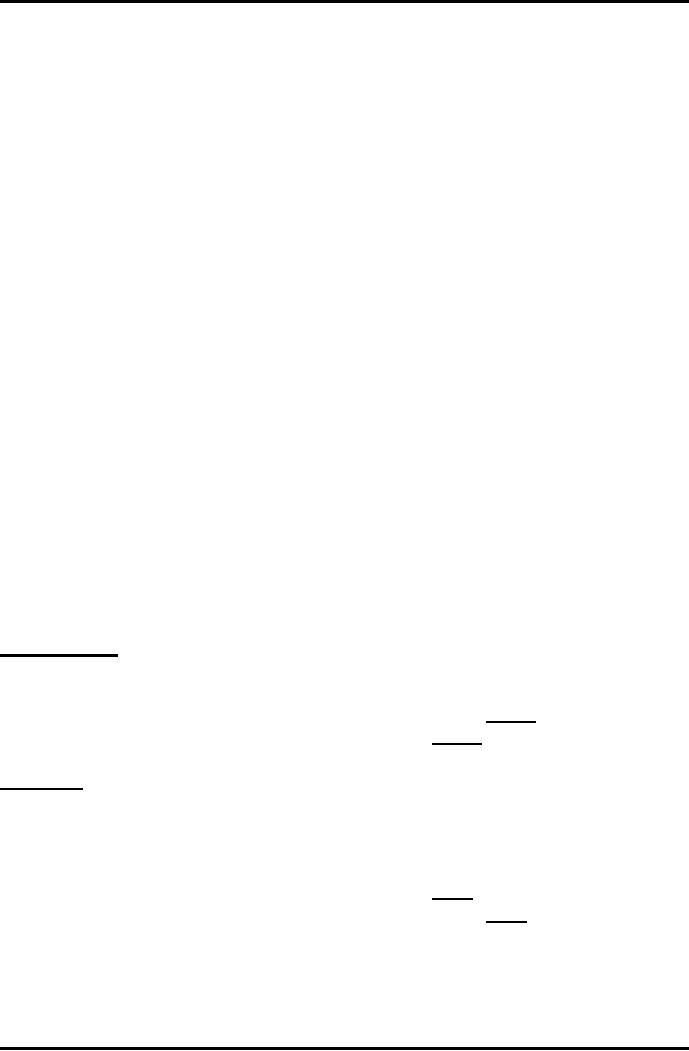
Advance
Financial Accounting
(FIN-611)
VU
Notes
For
the year ended
31-12-2009
(Extract)
Proposed
Dividends
Dividends
proposed for the year is Rs.
135,000.
Interest
on Debentures/Loan notes
Debentures,
loan notes, loan bonds, or
loan stocks are the
lenders' capital. These
are
the
long term loans and have charge on
the non-current assets of the
entity through a
trust.
Money against these loan
certificates is collected from the
general public.
Against
the capital money received,
the company pays interest to
the lenders.
A
company style of business
entity also receives money from
the financial
institutions
as
loan. This loan is also a
long term loan and is subject to interest
on it. This loan is
secured
against non-current assets or inventories
of the entity either
through
mortgage,
pledge, or hypothecation.
Interest
on these sources of finance is
calculated on the amount due for the
period
(time)
dues. It means that if the
loan was of Rs. 200,000 and an
installment of Rs.
50,000
has been paid, the
interest will be calculated on the amount
due i.e. Rs. 150,000.
It further
means that if the loan
was taken on 1st of
October, 2009 and the
accounting
year
ends on 31st
of December,
2009, the interest will be
calculated for the three
(3)
months
i.e. October, November, &
December.
Calculation
of interest/markup
Basic
Scenario
Rupees
5%
Debentures
opening
balance 1-1-09
25,000
Issued
during the year
20,000
Closing
balance 31-12-09
45,000
Scenario
I
If
the fresh issue of 5%
Debentures took place on
January 1st,
2009
Interest
on debentures 5% of Rs. 25,000 for full
year
1,250
Interest
on debentures 5% of Rs. 20,000 for full
year
1,000
Financial
charges for the year
2,250
115
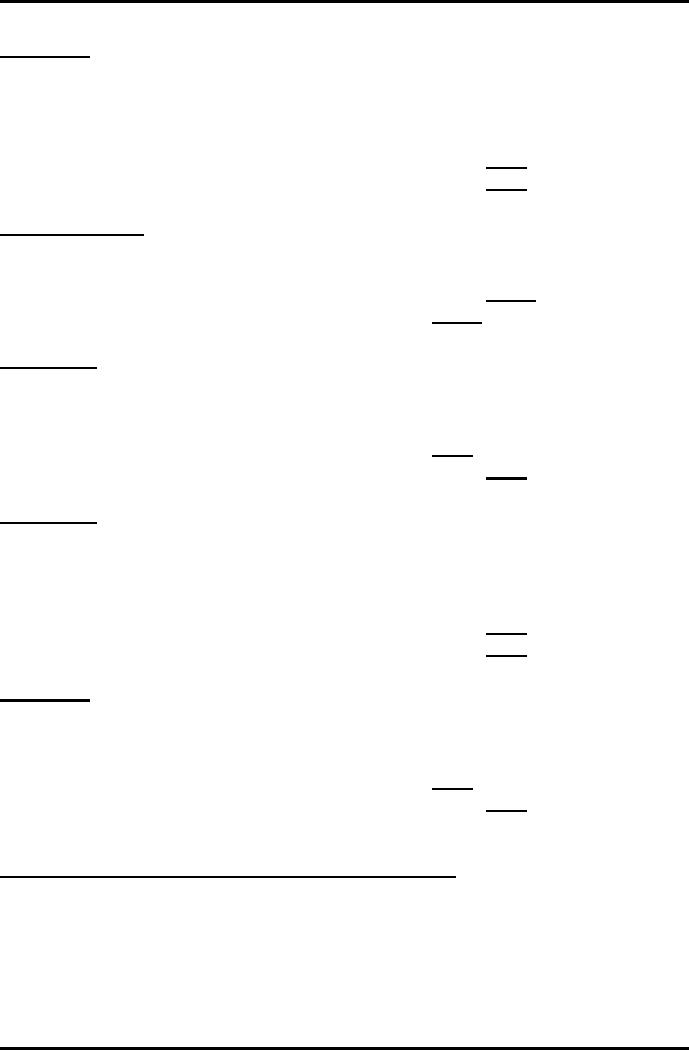
Advance
Financial Accounting
(FIN-611)
VU
Scenario
II
If
the fresh issue of 5%
Debentures took place on
July 1st, 2009
Interest
on debentures 5% of Rs. 25,000 for full
year 1,250
Interest
on debentures 5% of Rs. 20,000 for
six months
500
Financial
charges for the year
1,750
Changed
Scenario
Rupees
5%
Debentures
opening
balance 1-1-09
25,000
Redemption
during the year
15,000
Closing
balance 31-12-09
10,000
Scenario
III
If
the redemption of 5% Debentures
took place on January 1st, 2009
Interest
on debentures 5% of Rs. 10,000 for full
year
500
Financial
charges for the year
500
Scenario
IV
If
the redemption of 5% Debentures
took place on July 1st, 2009
Interest
on debentures 5% of Rs. 10,000 for full
year
500
Interest
on debentures 5% of Rs. 15,000 for six
months
375
Financial
charges for the year
875
Scenario
V
If
the redemption of 5% Debentures
took place on December 31st, 2009
Interest
on debentures 5% of Rs. 25,000 for full
year
1,250
Financial
charges for the year
1,250
Accounting
for Interest/markup
For
the amount of interest/markup
paid during the
year
Financial
charges a/c
Bank
a/c
Debit
to the financial charges a/c is
recognized as an expense in the
incomes statement
and is
presented as deduction form operating
profits before charging
income tax.
Credit
to bank a/c is recognized as a decrease
in cash resources kept in
the bank.
116
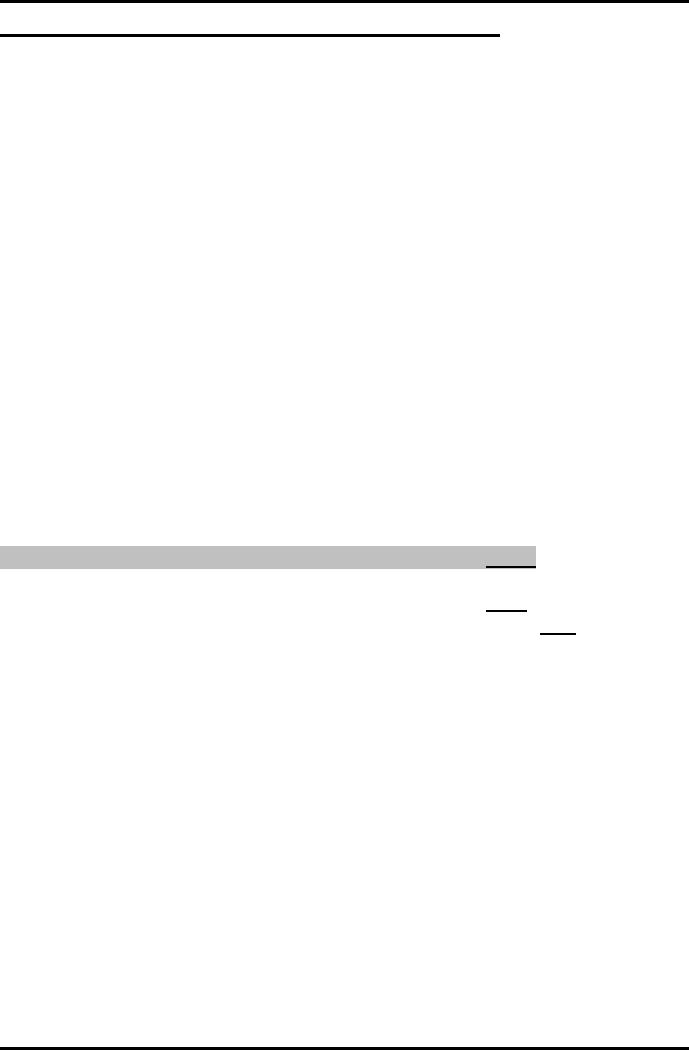
Advance
Financial Accounting
(FIN-611)
VU
For
the amount of interest/markup
due on balance sheet
date
Financial
charges a/c
Accrued/owing
financial charges a/c
Debit
to the financial charges a/c is
included in the interest/markup
paid and then
recognized
as an expense in the incomes
statement. Total financial
charges, paid and
due,
are presented as deduction form
operating profits before
charging income tax.
Credit
to accrued/owing financial charges a/c is
recognized as a current liability
in
balance
sheet, as it meets all the
criteria to be a liability.
Example:
Pleasure
Co. Ltd paid Rs. 25,000
during the year ending on
December 31, 2009 as
interest
on loan. On closing date Rs.
10,000 interest on loan is still
due.
Presentation:
Income
Statement
For
the year ended
31-12-2009
(Extract)
Profit
from operations
*****
Other
incomes
*****
Financial
charges
35,000
Profit
before tax
*****
Income
tax
(****)
Profit
after tax
*****
Balance
Sheet
As on
31-12-2009
(Extract)
Rupees
Current
Assets
Bank
balance (decreases by Rs.
25,000)
???????
Current
Liabilities
Interest
accrued/owing
10,000
Income
Tax Expense
Income
tax expense is a charge on
the realized profits earned
by an entity. This is
calculated
in accordance with the Income Tax
Ordinance 2001 and its
accounting
treatments
are set out in IAS
12.
117
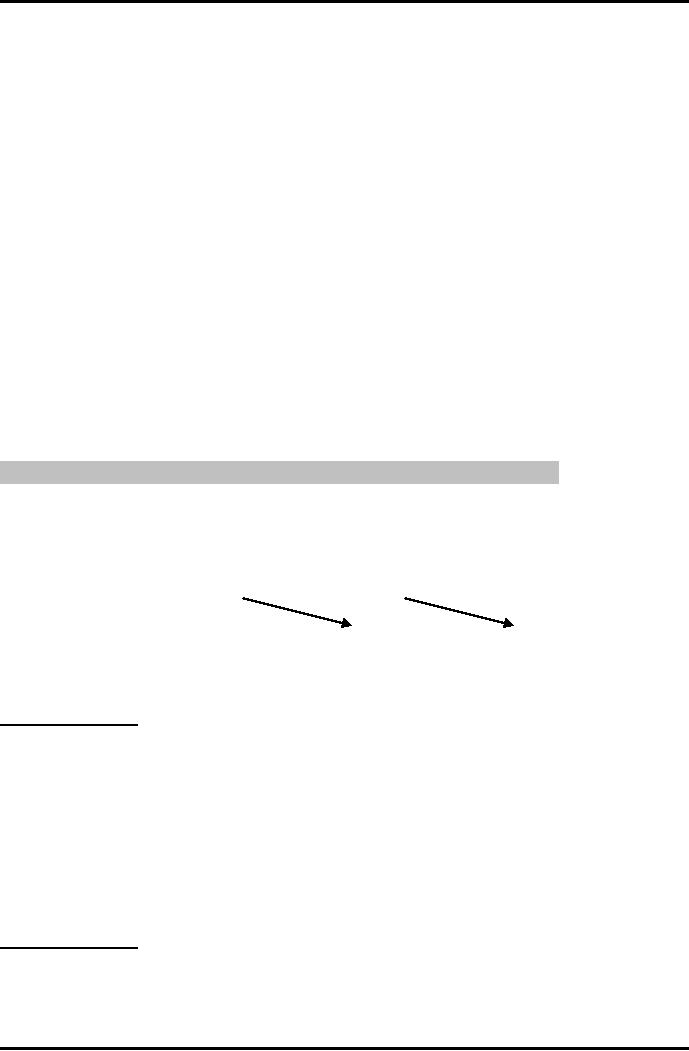
Advance
Financial Accounting
(FIN-611)
VU
Income
tax expense for the year
comprises of:
�
Current
tax, and
�
Deferred
tax
1)
Current tax
Current
tax is the income tax on
current year's taxable
profits that is levied by
the
income
tax authorities. The income
tax authorities come to know
the profits of an
entity
when the income tax return is
submitted. Income tax return for
the year is
prepared
by the tax accountant of the
entity after the financial
statements have been
approved
and published, obviously in these
financial statements the
current year's
income
tax expense is calculated on
estimated bases. Such estimated amount
of
income
tax is known as provision for income
tax. Hence, in the income
statement, the
income
tax expense representing
current tax will be an estimated amount
with an
adjustment
of the difference between
actual and estimated amount of previous
year's
income
tax expense.
Example:
Years
2007
2008
2009
Rupees
Rupees
Rupees
Profit
before tax
50,000
60,000
40,000
Income
Tax rate
40%
40%
40%
Provision
for tax
20,000
24,000
16,000
Actual
Tax levied
22,000
23,000
Accounting
Entries
For
the year 2007
Income
tax expense a/c
20,000
Provision
for tax a/c
20,000
It is
assumed that the year 2007
is first year of the
business and for the profits of
the
year
2007 the estimated amount of the
income tax expense is worked out as
Rs. 20,000.
Debit
to the income tax expense
a/c is subtracted from the profit
before tax. Whereas,
credit
to provisions for tax a/c is recognized
as a current liability, because
the entity
has
a present obligation to pay tax in future
against current year's
profits.
For
the year 2008
Provision
for tax a/c
20,000
Income
Tax expense a/c
2,000
Bank
a/c
22,000
118
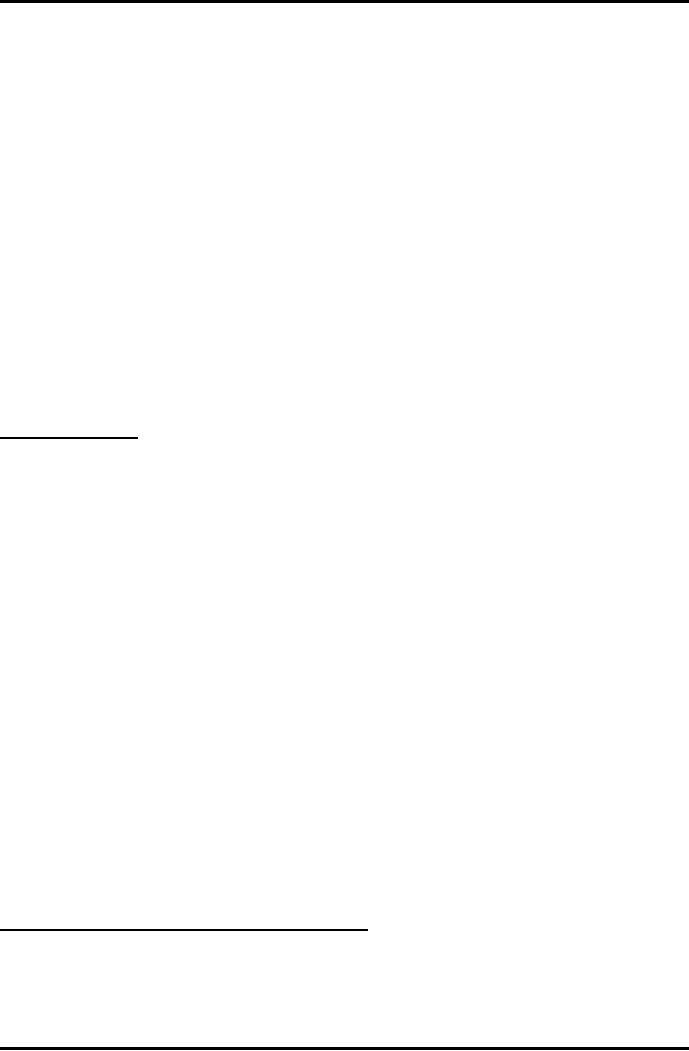
Advance
Financial Accounting
(FIN-611)
VU
Income
tax expense a/c
24,000
Provision
for tax a/c
24,000
Income
statement a/c
26,000
Income
tax expense a/c
26,000
Obligation
against the previous year's
income tax expense is
settled in the
current
year.
Amount of income tax paid in
excess to the previous
years' estimated
(provision
for)
income tax is charged to the
current year's income
statement as a part of
current
year's
income tax expense.
In
the above case Rs.
22,000 income tax was
paid against the provision
for income tax
Rs.
20,000 created last year,
the excessive amount of income
tax paid during the
current
year for the previous year
is Rs. 2,000 known as under-provision.
This Rs.
2,000
(under-provision) is closed into the
income statement for the
current year along
with
the current year's provision
of Rs. 24,000 as an expense. So,
the total amount of
income
tax expense for the year
2008 is Rs. 26,000.
For
the year 2009
Provision
for tax a/c
24,000
Income
Tax expense a/c
1,000
Bank
a/c
23,000
Income
tax expense a/c
16,000
Provision
for tax a/c
16,000
Income
statement a/c
15,000
Income
tax expense a/c
15,000
When
the amount of income tax
paid in the current year is
lesser than the
previous
years'
estimated (provision for)
income tax the difference is
known as over provision,
which is
subtracted from the current
year's provision for income
tax as an adjustment.
In
the above case Rs.
23,000 income tax was
paid against the provision
for income tax
Rs.
24,000 created last year,
the lesser amount of income
tax paid is Rs. 1,000.
This
under-provision
of Rs. 1,000 is subtracted form
the current year's provision
for income
tax
of Rs. 16,000 and the
balance of Rs. 15,000 is
closed into the income
statement for
the
current year as an
expense.
Working
in support of the above
accounting:
2007
2008
2009
Rupees
Rupees
Rupees
Income
Statement
Provision
for current year's
tax
20,000
24,000
16,000
119
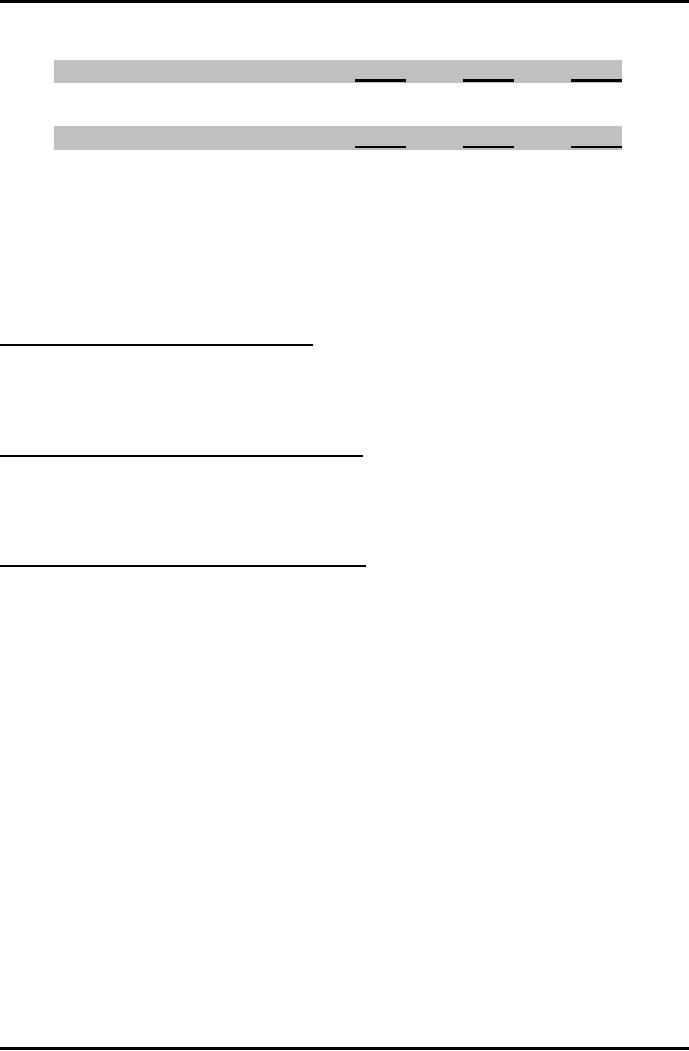
Advance
Financial Accounting
(FIN-611)
VU
Add Under
provision
2,000
Less
Over provision
(1,000)
Income
tax expense for the
year
20,000
26,000
15,000
Balance
Sheet
Current
Liabilities
Provision
for income tax
20,000
24,000
16,000
Deferred
tax
Deferred
tax is an accounting adjustment
that is used to match the
tax effects with
accounting
profits.
Accounting
entries
For
creating provision for
deferred tax
Income
tax expense a/c
Deferred
tax liability a/c
For
increasing the provision for
deferred tax
Income
tax expense a/c
Deferred
tax liability a/c
For
decreasing the provision for
deferred tax
Deferred
tax liability a/c
Income
tax expense a/c
Presentation
in Financial Statements
Balance
Sheet
As on
31-12-2009
(Extract)
Liabilities
Non-Current
Liabilities
Deferred
tax liability
****
Current
Liabilities
Provision
for income tax
****
120
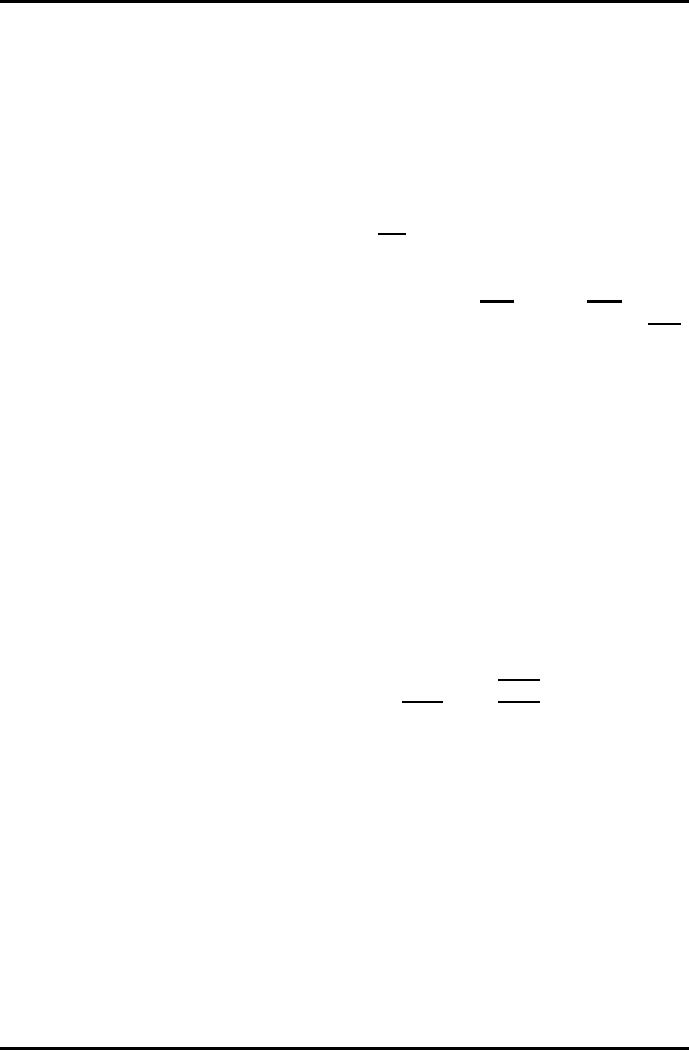
Advance
Financial Accounting
(FIN-611)
VU
Income
Statement
For
the year ended
31-12-2009
(Extract)
Profit
before tax
****
Income
tax expense
Current
tax
Provision
for current year's
tax
***
Add
under-provision
***
Less
over-provision
(***)
****
Deferred
tax
Deferred
tax liability increased
by
****
Deferred
tax liability decreased
by
(***)
(****)
Profit
after tax
****
Solved
Problem:
Q.1:
Amjad
Ltd. is preparing its
accounts for 20X2. A summarized
trial balance is
noted
below:
Rs.
000
Rs.
000
Profits
before tax and
dividends
1,036
Total
assets
2,292
Sundry
current liabilities
241
Income
tax
25
Provision
for deferred tax
47
200
Long-term
loan
Ordinary
shares
100
693
Opening
retained earnings
_____
2,317
2,317
Notes:
a. No
dividends have been paid or
proposed.
b.
Last year's income tax
was settled at Rs. 238,000.
The under provision is
noted
on
the trial balance.
c.
The provision for deferred
tax should be adjusted to a
closing balance of
Rs.
33,000.
Required:
Prepare
an income statement, statement of
changes in equity and balance
sheet with
for Amjad Ltd.
for 20X2.
121
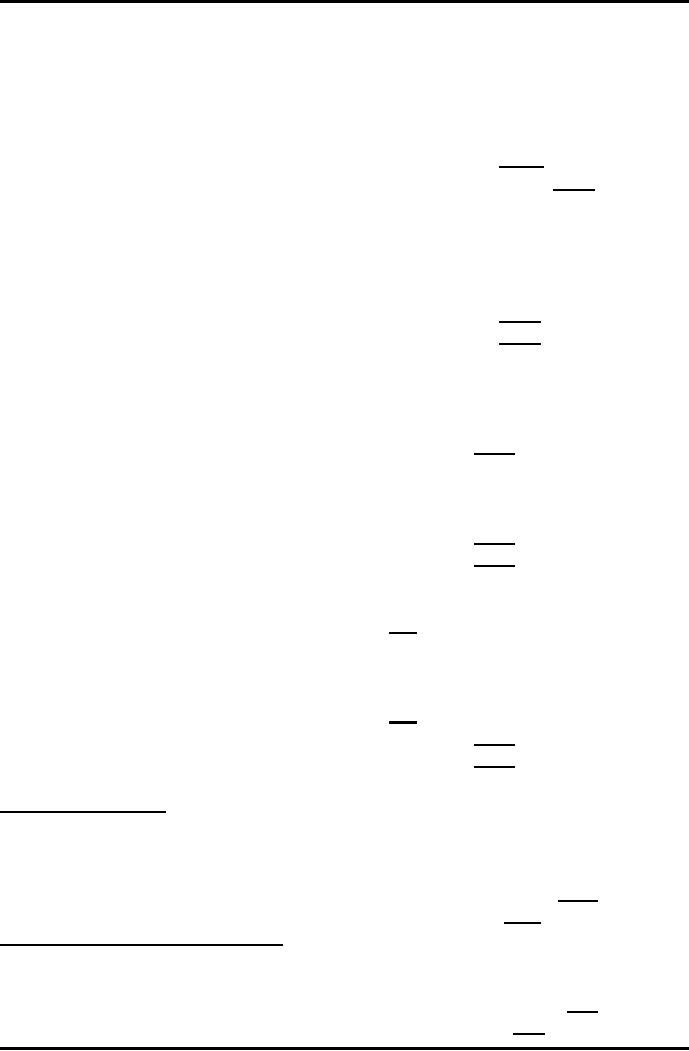
Advance
Financial Accounting
(FIN-611)
VU
Solution:
Amjad
Ltd.: Income Statement for
20X2
Rs.
000
Profit
before tax
1,036
Taxation
(Note
1)
(364)
Profit
after tax
672
Amjad
Ltd.: Statement of changes in equity
(extract)
Rs.
000
Opening
retained earnings
693
Profit
for the year
672
Closing
retained earnings
1,365
Balance
Sheet for 20X2
Rs.
000
Rs.
000
Total
Assets
2,292
Equity
and Liabilities
Equity
Ordinary
shares
100
Retained
earnings
1,365
1,465
Non-Current
Liabilities
Deferred
tax (Note 2)
33
Long-term
loan
200
233
Current
Liabilities
Sundry
241
Income
tax
353
594
2,292
Note
1 Tax Charge
Rs.
000
Income
tax charge on the profits
for the year at XX %
353
Under
(over) provision for tax in
previous years
25
Deferred
tax charge (credit)
(14)
364
Note
2 Provision for deferred
tax
Rs.
000
Opening
provision
47
Charge
(credit) for the year
(14)
Closing
provision
33_
122

Advance
Financial Accounting
(FIN-611)
VU
Practice
Questions:
Q
1:
TAXATION
X LTD
X Ltd. is
preparing its accounts for
the year ended 31 December
20X6. The deferred
tax
account
as at 31 December 20X5 was
Rs. 50,000. A provision of
Rs. 70,000 for
deferred
tax
will be required at the year-end.
The current income tax
charge provision for
the
year
is Rs. 60,000. Prepare the
relevant extracts from the
income statement,
balance
sheet
and the notes to the
accounts.
Solution:
TAXATION
X LTD
Extract
from the income
statement
For
the year ended 31 December
20X6
Rs.
Rs.
Taxation
Income
tax at X%
60,000
Deferred
taxation
20,000
Tax
charge
80,000
Extract
from balance
sheet
As at 31
December 20X6
Rs.
Non-current
liabilities
Deferred
taxation (Note 1)
70,000
Current
liabilities
Income
tax
60,000
Notes
to the accounts
1.
Deferred
taxation
Rs.
Balance
brought forward
50,000
Transfer
from income statement
20,000
Balance
carried forward
70,000
Q
2:
TAXATION
UNITED LTD
An
extract from the trial
balance of United Ltd. as at 31 December
20X8 shows:
a.
The
tax provision for the year
is estimated at Rs.
170,000.
b.
The
income tax rate is
30%.
c.
A
provision for deferred taxation of
Rs. 45,000 will be required at
the year-end.
d.
The
directors are not proposing a
final dividend.
123
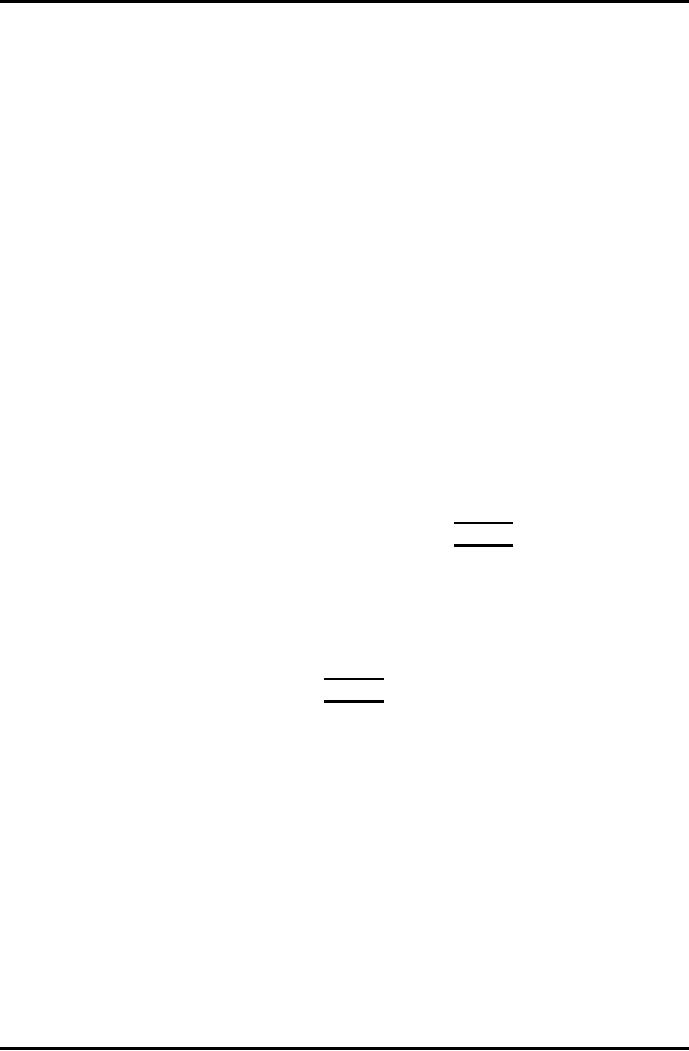
Advance
Financial Accounting
(FIN-611)
VU
Required
Prepare
the figures to appear in the
income statement and statement of
changes in
equity.
Solution:
TAXATION
UNITED LTD
Income
statement
For
the year ended 31 December
20X8
Rs.
Revenues
1,500,000
Expenses
(950,000)
Profit
from operations
550,000
Investment
income
8,000
Profit
before tax
558,000
Taxation
(Note 1)
(187,500)
Profit
for the financial
year
370,500
Statement
of changes in equity
Rs.
Opening
retained earnings
650,000
Profit
for the financial
year
370,500
Dividends
22,500
Closing
retained earnings
998,000
Note
1 Taxation
Rs.
On
profits of the year
170,000
Under-provision
in prior year (1)
2,500
Deferred
taxation (2)
15,000
187,500
Notes
1.
The trial balance shows an
under provision in last year's
income statement for
tax
of Rs. 2,500 (22,500
20,000). This is accounted for by
increasing this
year's
tax
charge by Rs. 2,500.
2.
The double entry for the
transfer to deferred taxation for
the year is:
Dr.
Tax
charge in the income
statement
Rs.
15,000
Cr.
Deferred
taxation provision in the
balance sheet
Rs.
15,000
124
Table of Contents:
- ACCOUNTING FOR INCOMPLETE RECORDS
- PRACTICING ACCOUNTING FOR INCOMPLETE RECORDS
- CONVERSION OF SINGLE ENTRY IN DOUBLE ENTRY ACCOUNTING SYSTEM
- SINGLE ENTRY CALCULATION OF MISSING INFORMATION
- SINGLE ENTRY CALCULATION OF MARKUP AND MARGIN
- ACCOUNTING SYSTEM IN NON-PROFIT ORGANIZATIONS
- NON-PROFIT ORGANIZATIONS
- PREPARATION OF FINANCIAL STATEMENTS OF NON-PROFIT ORGANIZATIONS FROM INCOMPLETE RECORDS
- DEPARTMENTAL ACCOUNTS 1
- DEPARTMENTAL ACCOUNTS 2
- BRANCH ACCOUNTING SYSTEMS
- BRANCH ACCOUNTING
- BRANCH ACCOUNTING - STOCK AND DEBTOR SYSTEM
- STOCK AND DEBTORS SYSTEM
- INDEPENDENT BRANCH
- BRANCH ACCOUNTING 1
- BRANCH ACCOUNTING 2
- ESSENTIALS OF PARTNERSHIP
- Partnership Accounts Changes in partnership firm
- COMPANY ACCOUNTS 1
- COMPANY ACCOUNTS 2
- Problems Solving
- COMPANY ACCOUNTS
- RETURNS ON FINANCIAL SOURCES
- IASB’S FRAMEWORK
- ELEMENTS OF FINANCIAL STATEMENTS
- EVENTS AFTER THE BALANCE SHEET DATE
- PROVISIONS, CONTINGENT LIABILITIES AND CONTINGENT ASSETS
- ACCOUNTING POLICIES, CHANGES IN ACCOUNTING ESTIMATES AND ERRORS 1
- ACCOUNTING POLICIES, CHANGES IN ACCOUNTING ESTIMATES AND ERRORS 2
- BORROWING COST
- EXCESS OF THE CARRYING AMOUNT OF THE QUALIFYING ASSET OVER RECOVERABLE AMOUNT
- EARNINGS PER SHARE
- Earnings per Share
- DILUTED EARNINGS PER SHARE
- GROUP ACCOUNTS
- Pre-acquisition Reserves
- GROUP ACCOUNTS: Minority Interest
- GROUP ACCOUNTS: Inter Company Trading (P to S)
- GROUP ACCOUNTS: Fair Value Adjustments
- GROUP ACCOUNTS: Pre-acquistion Profits, Dividends
- GROUP ACCOUNTS: Profit & Loss
- GROUP ACCOUNTS: Minority Interest, Inter Co.
- GROUP ACCOUNTS: Inter Co. Trading (when there is unrealized profit)
- Comprehensive Workings in Group Accounts Consolidated Balance Sheet